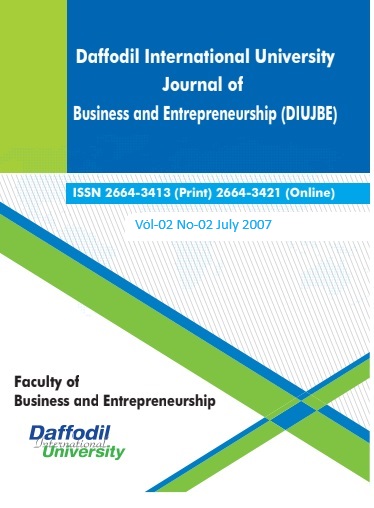Small and Medium Enterprises (SMEs) Financing Revisited:
Lessons for Bangladesh
DOI:
https://doi.org/10.36481/diujbe.v02i2.e1n8zk73Keywords:
financial, lending technology, Medium EnterprisesAbstract
Based on existing literature this paper provides a clearly conceptual framework for Small and Medium Enterprises (SMEs) financing in the global context. The conceptual framework has been organized in terms of some selected crucial aspects, such as: the financial institution structures; the lending infrastructures, and finally the lending strategies in using SME financing. The financial institution structures deals with the comparative advantages of different types of financial institutions. Here we focus mainly on the comparative advantages of large vs. small financial institutions; foreign-owned vs. domestically-owned institutions, and state-owned vs. privately-owned institutions in lending to SMEs. The lending infrastructure includes: the information environment; the legal, judicial
and bankruptcy environment, and finally the tax and regulatory environments, all of which may directly or indirectly affect SME credit availability. Regarding lending strategies, we focus mainly on the core technologies such as: financial statement lending; small business credit scoring; asset-based lending; factoring; trade credit, and finally the relationship lending technology. We focus on the parts of the financial system that are most relevant to SME finance. We concentrate on the private debt markets that provide external finance to SMEs, and exclude discussions of the public equity and debt markets, which are generally beyond the reach of
SMEs Small and Medium Enterprises (SMEs) Financing Revisited: Lessons for Bangladesh

